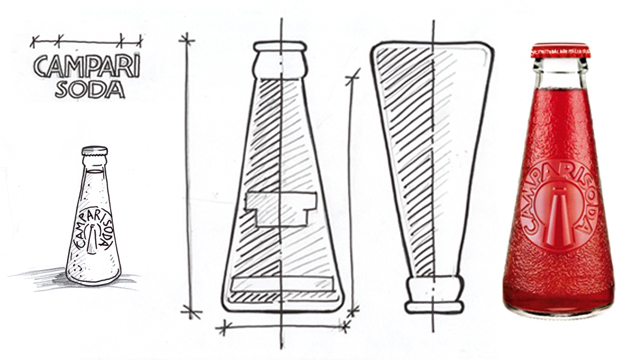
The design and the creativity of Made in Italy are factors as desirable as difficult to summarize. Everyone speaks about them. Every agency, creative studio or professional of communication promises the “formula” of Made in Italy, but at the end – when the customer takes the final decision – few of them are able to maintain the promises made.
Without having to establish in this post if what they promise is a lie since the beginning or if they are really sure to sell you something which are not able to do, we can’t forget that the truth is always in the facts!
When the customers are in front of your product there are 2 possibilities:
- They recognize and perceive the Italian style of your product and so they chose it buying it
- They don’t recognize it as Italian style and they look for something which costs less (decision based on the price)
That is because make understand that the box contains an Italian products is not so easy as adding a tricolor and the wording “Made in Italy”.
In fact, in packaging, communicating the origin of the product through common stereotypes but inflated finishes to prove a wrong choice which is replicable and impersonal. Anyone can make in plain sight a “made in Italy” stamp or a tricolor. These can’t solve the necessity of making a perception of Italian style through the design.
It is easy to notice that in sales points dedicated to a touristic and foreign target– service stations, stations and airports- stereotyped forms of Italian style which find space that they couldn’t find in large retailers.
Any reasoning is superfluous without answering the question: in which way the choice of packaging (and of its distinctive characteristics) can help your sales?
There is just only one type of creativity which is good for your product: that put itself at service of sales.
I have already explained it in this article:
Guiding the creativity to a functional vision of packaging brought us to make the most the expression and the nature of Italian design. This is our strong point.
It represents our cultural and professional background, we born and grew up before as consumers and then as professionals surrounded by Italian design.
We made exactly in this way on the restyling of Melegatti’s line:
How the development of food packaging can generate a +22% [case study]
Don’t confuse this speech with a manifesto of Made in Italy end in itself. It isn’t.
I am talking about it because really the message of a defined design like Italian style can be your competitive advantage on shelfs.
Now more than ever the purpose for any company is represented by the numbers of selling and obtaining them to improve each aspect of product (packaging first) becomes a duty!
Do you need a packaging made in Italy? Click Here →
The Italian design strengthens the identity of the product – bringing with itself a non-verbal message that when contextualized it means an increase of sales:
- I can recognize the product
- I can perceive in clear and distinctive way its message
- I can recognize the non-verbal message of design as coherent with the verbal message
- I can influence the choice of customer without any hesitation to the purchase
Export market can certainly benefit of this vision, but let’s not underestimate the home market where the growing trend to direct all of extreme creativity takes a lot of Italian products to lose their pedigree.
A coherent design would immediately reposition the competitor’s products. In other words it would be easier to be perceived as “the original made in Italy” undermining the authenticity of competitors which are directed on an inconsistent creativity with the origin of product. Double advantage in short!
How much is the worth of the perception of a product Made in Italy?
It comes to my mind an interesting example which is about the market of olive oil where Italy is not world leader.
The largest world producer of olive oil is in fact Spain (it produces about twice of olive oil than Italy). This is not enough to make Spain world leader in the mind of the customer – where the most important choice, the purchase, takes place.
In fact, the perception of the customer sees Italy as the leader of the market even if much of the oil we perceive as Italian is Spanish sold with Italian tags which don’t use ambiguous lettering, but they adopt a choice of coherent design with characteristics of an Italian product.
In other words they work on a deeper and stronger message than a simple tricolor, taking the customer to prefer the product based on the perceptions transmitted by the packaging.
The data speak clearly:
- Spain produces more than 50% of the oil produced in the whole world
- Italy produces 50% of the oil produced from Spain
- Italian producers earn more than Spanish ones also buying Spanish oil which is bottled with tags of Italian brands
The perception wins and the packaging is the best tool to build it, if it works to sell Spanish oil in Italy, it works for any type of product!
In conclusion:
The tool of Made in Italy is important, don’t waste it! Use distinctive elements, which are not replicable, focus on message of design and position your product out of the competition of brands and certifications, make sure it communicates by its design!
We work following this approach with any new product.
Are you interested in the cost of a restyling of your packaging?
How much does the restyling of your old packaging cost?
Do you need a corporate identity and you want to know the cost?
Do you want to know how much a single package cost?
Are you a start up and you need a quote?
In 1996 enters in the world of marketing, in 1999 founded Ardigia Marketing Funzionale (Ardigia Functional Marketing), in 2013 founded Packaging in Italy, Design Agency for Packaging Positioning™


